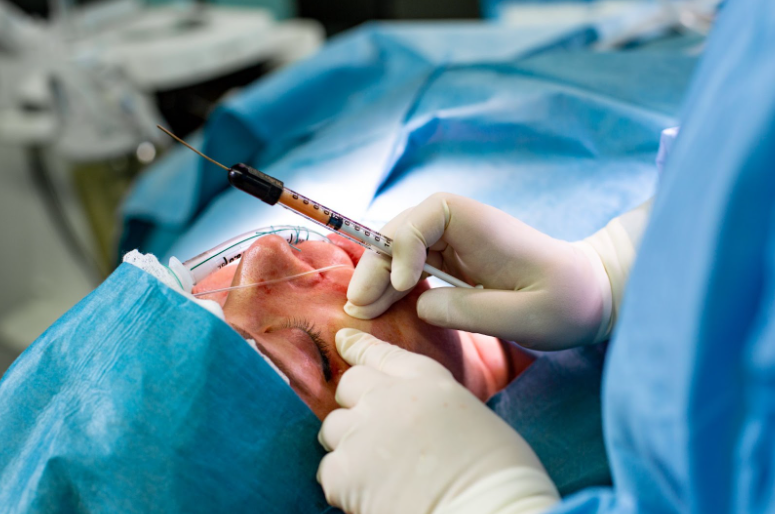Exploring The Risks of Fat Grafting
Welcome to another exciting blog post where we delve into the world of cosmetic procedures, specifically fat grafting. As we strive for beauty and self-improvement, it’s crucial to be well-informed about the potential risks and complications associated with these procedures. In this article, we will explore the downsides of fat grafting and touch on the findings of a groundbreaking paper titled “Facial Fat Grafting (FFG): Worth the Risk? A Systematic Review of Complications and Critical Appraisal”. So, buckle up and join us on this informative journey!
Understanding the Basics of Fat Grafting
Fat grafting, also known as fat transfer or lipofilling, involves the removal of fat from one area of the body (through liposuction) and injecting it into another area to enhance volume or contours. Fat grafting can be implemented for enhancements for the face, breasts, buttocks, and hands, as well as in helping to diminish scars. It has gained popularity due to its more natural and long-lasting results. However, beneath its surface lies a hidden world of potential complications.
What Are the Risks?
There have been risks associated with fat grafting. Let’s explore some of those risks and complications:
- Infection Risks: It is found that fat grafting carries a higher risk of infection compared to other cosmetic procedures. This is primarily due to the multiple steps involved in fat harvesting and processing before injection into the body. While the occurrence of infections is relatively rare, patients must understand the severity and potential consequences.
- Fat Necrosis: Fat necrosis is the death of fat cells within the transplanted area. This is not really a “complication” per se as it always occurs to some extent. A recent NIH study found that 20 to 90% of the transferred fat can resorb. Simply put, 20 to 90% of the fat placed can dissolve away thus requiring the need for repeated procedures and poor aesthetic outcomes. This wide range of resorption rates is thought to be due to the many differences in how the fat is processed and grafted. It can result in firm lumps or cysts, causing discomfort and potentially leading to the need for further surgical intervention. Awareness of this risk is crucial for patients considering fat grafting.
- Nodule Formation/Asymmetry: A seemingly innocuous consequence of fat grafting, nodule formation can significantly impact the aesthetic outcome. These palpable lumps can cause an asymmetrical appearance and may require additional procedures to resolve, causing distress to patients who sought a natural, harmonious result.
- Microcalcification: Another significant finding is the presence of microcalcification, which refers to the formation of tiny calcium deposits within the grafted fat. These deposits can be detected through imaging techniques, like mammograms, and may mimic the appearance of breast microcalcifications, leading to unnecessary breast biopsies or cancer concerns. This underlines the importance of proper screening and follow-up examinations.
- Intravascular Injection: Intravascular injection or migration during fat grafting is a serious complication that can lead to a number of problems, including blindness, stroke, and even death. It occurs when fat is injected into a blood vessel instead of the intended tissue. This can happen if the needle is inserted too deeply or if the blood vessel is inadvertently punctured.
Digging into the Research: Unveiling the Severity of Complications
The aforementioned paper presents a comprehensive analysis of fat grafting complications based on a large-scale study. It highlights the importance of patient awareness and informed decision-making when considering this procedure.
While fat grafting is generally considered safe, it is essential to emphasize the potential severity of complications. The study found that among about 5500 patients across the selected literature, about 350 experienced complications. Of those complications, almost a third of them were severe, requiring neurological or neurosurgical intervention. A total of 87 patients required attention due to adverse events, and only 2 of them fully recovered. ‘Severe’ was defined as ‘often leading to permanent disability or death.’
Fat necrosis may necessitate additional surgeries, while misinterpretation of microcalcifications can cause unnecessary stress and medical procedures. These outcomes highlight the need for patients to be fully informed and prepared for the potential risks involved.
The Role of Informed Consent
In light of the study’s findings, it becomes evident that patients should actively participate in their decision-making process. It is essential for healthcare professionals to provide comprehensive information about the potential complications, their severity, and the recommended course of action in case of adverse events. Informed consent ensures that patients are fully aware of what they are signing up for, enabling them to make well-informed choices.
Conclusion
As we conclude this eye-opening journey into the true dangers of fat grafting, it is crucial to stress that the procedure can indeed be performed safely. However, it is equally important for patients to understand the potential risks, complications, and severity behind them. As found, risks and complications tend to be underreported or research is biased. By being aware and well-informed, individuals can make the best decisions for their well-being and cosmetic goals. Remember, knowledge is power, and it empowers you to make informed choices on your journey toward self-improvement.
If you are interested in learning more about our fat grafting, please contact our office to schedule a consultation. Dr. Penelope Treece would be happy to discuss your individual needs and goals and help you determine if fat grafting is right for you.


